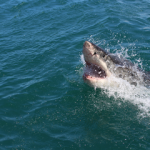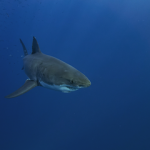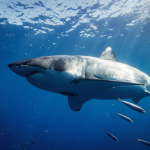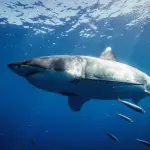
In this article I am talking about the Pacific highway for the largest and most powerful predatory fish in the sea, which is the Great White Shark that migrates along the Great White Highway. Some of the Great white sharks that travel the southern part of this underwater highway can weigh-in as much as 2,000 kilos (2.2 US Tons), which is roughly the size of a pickup truck.
The Great White Highway is a migration route that runs approximately 1,250 miles into the Pacific Ocean, roughly half way to Hawaii. The Great White Highway begins on Mexico’s Baja coast and California’s coast and runs west to White Shark Café, where great white sharks gather from April to July.
The best way to do more diving is to book yourself on a scuba diving liveaboard. If you want to dive with great white sharks, one of the best places in the world to do this is at Guadalupe Island, Mexico (which includes one liveaboard departing from San Diego). You can check the latest and best deals on liveaboards, and dive with great whites at Guadalupe Island, using the following window:
See the video below, in which the northern Great White Highway from California’s coast is also referred to as the Blue Serengeti by scientists from Stanford University.
Before you read further, you may also like to find out about places where you may be surprised to find great white sharks. For example, would you expect to find great white sharks in the Caribbean or in the Gulf of Mexico? What about on the Great Barrier Reef in Australia or perhaps great white sharks in the Maldives?
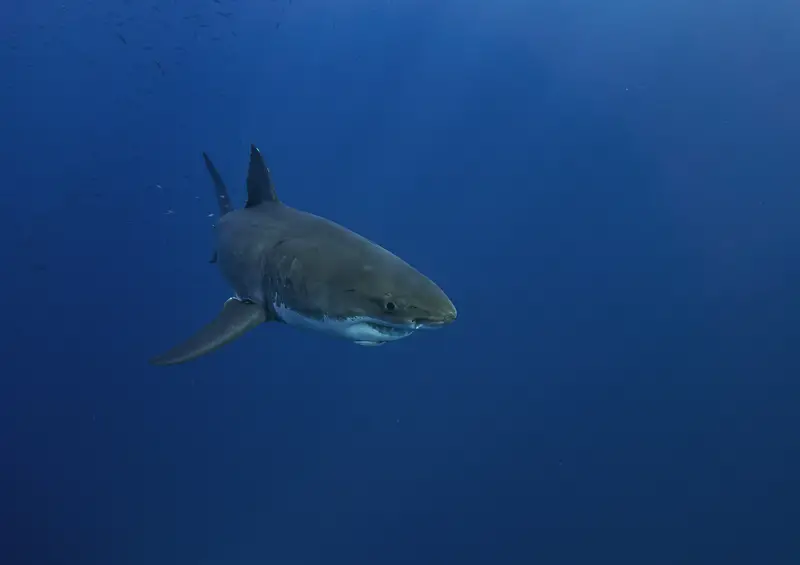
Where is the Great White Highway?
The Great White Highway is in the Pacific Ocean and begins from California’s coast and the Farallon Islands just off San Francisco and from Mexico’s Baja coast. The Great White Highway runs west to a place that white shark researchers call the White Shark Café.
The White Shark Café is about half way to Hawaii. Mexico’s Guadalupe Island is on south eastern stretch of the Great White Highway, which is roughly 250 miles from San Diego.
If you would like to dive with great white sharks at Guadalupe Island from San Diego, please take a look at this article: Shark Cage Diving San Diego. This will be a trip of a live-time!
For other places to cage dive with great white sharks, which includes the Farallon Islands, please take a look at this article: Where Is The Best Place To Cage Dive With Sharks.
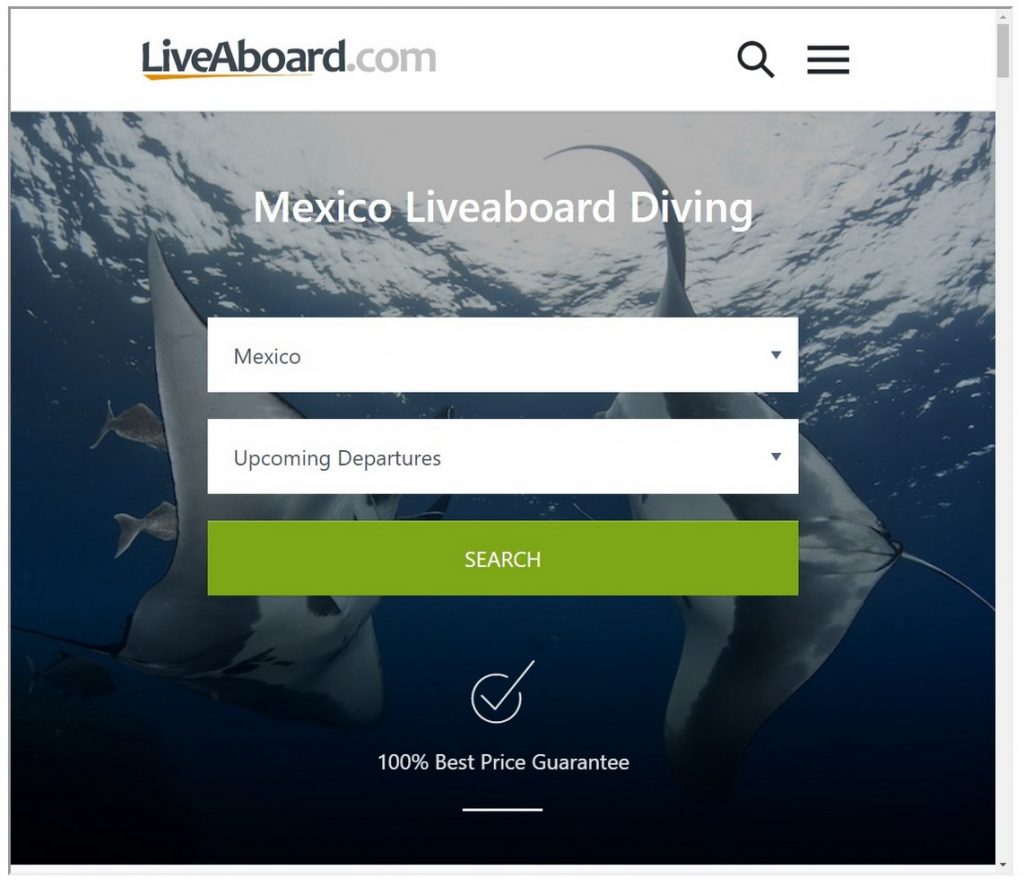
Guadalupe Island on the Great White Highway
Great white sharks migrate back from White Shark Café along the Great White Highway to Guadalupe Island from August through February.
Guadalupe great white sharks have increased in numbers in the last 20 years from just under 37 to now well over 200 white sharks. This makes Guadalupe Island one of the best great white shark research sites in the world.
The increase in numbers of great white sharks is probably as a result of the increased population of elephant and fur seals.
The population of elephant seals recovered from a time when these seals were nearly wiped out by human hunting to seek blubber to make oil. It was in 1888 when the elephant seal was declared extinct, but in 1892 eight elephant seals were discovered by a Smithsonian expedition to Guadalupe Island.
Somehow the species survived, and by the early 20th Century there were nearly 100 elephant seals on Guadalupe Island. This population has grown to a population of over 10,000 elephant seals, which are now protected by the Mexican Government.
It is these elephant seals, along with the fur seals that are the favoured prey of the great white shark. This is because they are filled with fat. Fat has twice the calorific value of protein, which is what great whites need to fuel their long migrations along the Great White Highway.
Did you know; the longest known migration by a female great white shark recorded a journey from South Africa to Australia and back, which is 22,000 kilometres (13,750 miles).
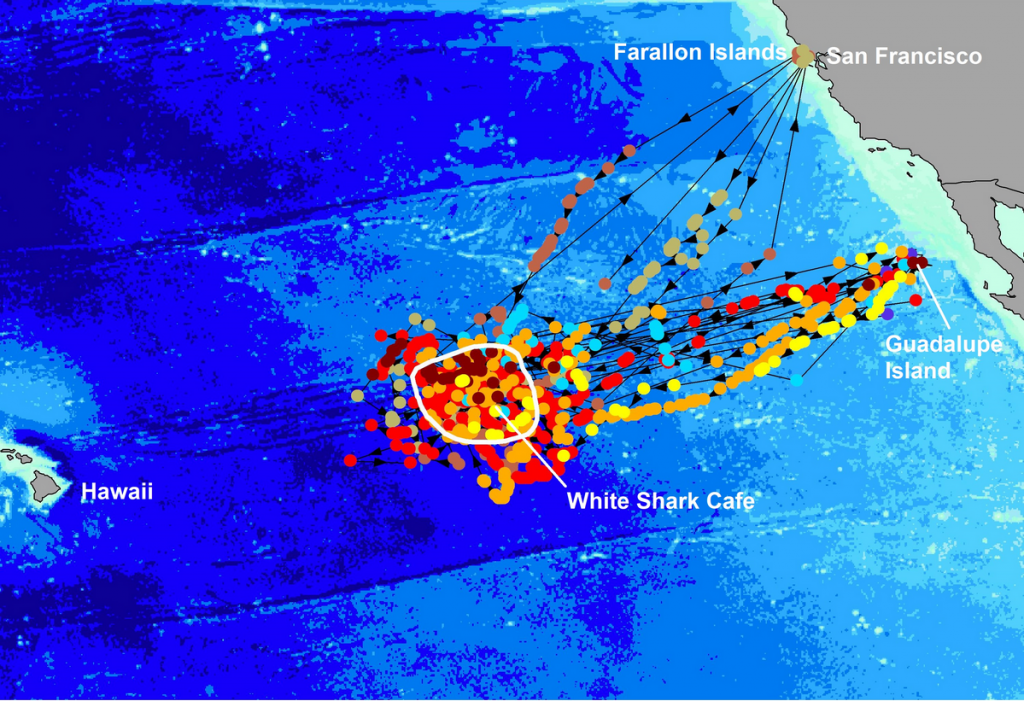
California great white highways
The Great White Highway to the White Shark Café also runs from California’s Farallon Islands off the coast of San Francisco. But also, another white shark highway runs from California’s coast to Hawaii too, which is a shown in the next image from Mercury News, which was taken from research into great white shark migratory patterns by Stanford University.
The blue line indicates the paths of 6 tagged great white sharks from San Francisco’s Bay Area to Hawaii.
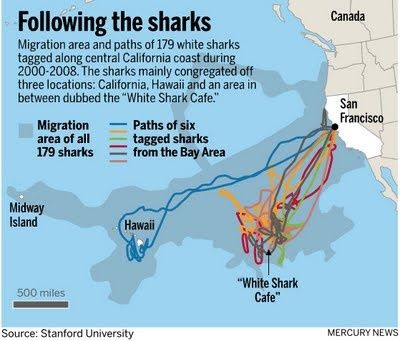
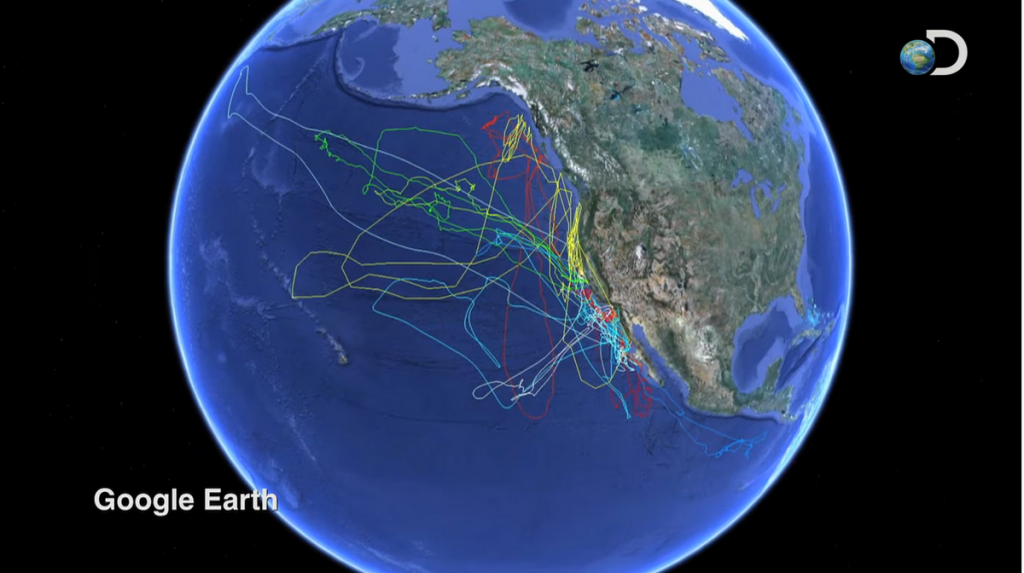
Great white shark migratory journeys
The above image was taken from the following video made by the Discovery Channel about migrating great white sharks. The video reveals how every fall 100 great white sharks arrive on the California coast.
Some of these great white sharks have been known to weigh in at 7,000lbs (3,175kg). 7,000lbs is the equivalent weight of a large hippopotamus and nearly 40-times the weight of the average adult human.
These great white sharks feed on the elephant seals, sea lions and seals on the coast of California, which is rich in nutrients and sea life.
Dr. Barbara Block of Stanford University is the lead investigator on a 10-year project researching great white sharks, where she has tagged over 4,000 animals from 23 different species, which include the great white shark.
Do you know why great white sharks die in captivity? If you would like to find out why, please take a read of this article about why great white sharks die in captivity, even when they are put into huge aquariums.
I hope you enjoyed this article about the great white highway
I’d love to hear from you. Tell us about your adventures of diving and snorkeling, in the comments below. But in particular if you’ve been on the Master liveaboard. Please also share your photos. Either from your underwater cameras or videos from your waterproof go-pro’s!
If this article hasn’t answered all of your questions. If you have more questions either about snorkeling or scuba diving (or specifically about the great white highway), please comment below with your questions.
There will also be many more articles about scuba and scuba diving safety tips (and on snorkeling too) for you to read and learn about this fabulous sport.
Have fun and be safe!

